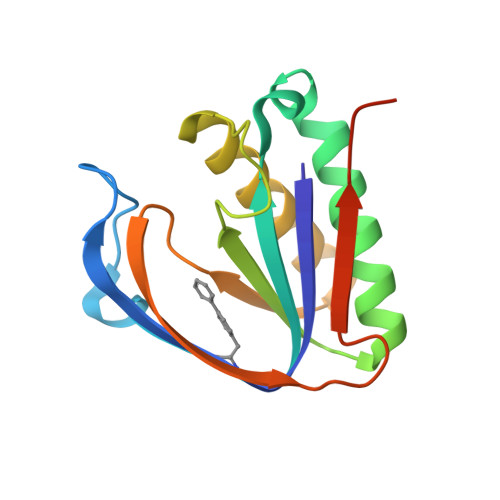Transition states. Trapping a transition state in a computationally designed protein bottle.
Pearson, A.D., Mills, J.H., Song, Y., Nasertorabi, F., Han, G.W., Baker, D., Stevens, R.C., Schultz, P.G.(2015) Science 347: 863-867
- PubMed: 25700516
- DOI: https://doi.org/10.1126/science.aaa2424
- Primary Citation of Related Structures:
4S02, 4S03, 4S0I, 4S0J, 4S0K, 4S0L - PubMed Abstract:
The fleeting lifetimes of the transition states (TSs) of chemical reactions make determination of their three-dimensional structures by diffraction methods a challenge. Here, we used packing interactions within the core of a protein to stabilize the planar TS conformation for rotation around the central carbon-carbon bond of biphenyl so that it could be directly observed by x-ray crystallography. The computational protein design software Rosetta was used to design a pocket within threonyl-transfer RNA synthetase from the thermophile Pyrococcus abyssi that forms complementary van der Waals interactions with a planar biphenyl. This latter moiety was introduced biosynthetically as the side chain of the noncanonical amino acid p-biphenylalanine. Through iterative rounds of computational design and structural analysis, we identified a protein in which the side chain of p-biphenylalanine is trapped in the energetically disfavored, coplanar conformation of the TS of the bond rotation reaction.
- Department of Chemistry, and Skaggs Institute for Chemical Biology, The Scripps Research Institute, La Jolla, CA 92037, USA.
Organizational Affiliation:

















